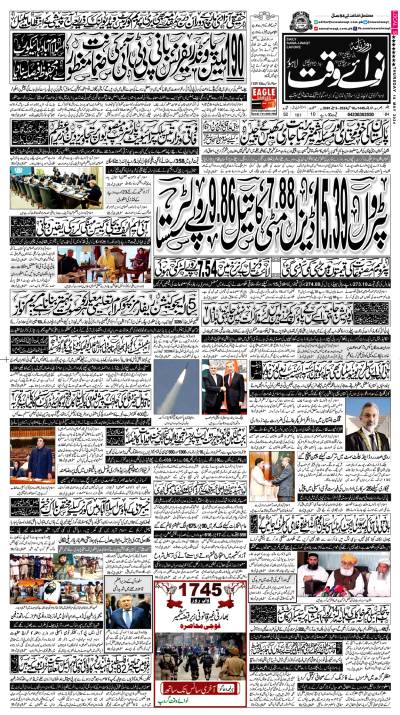Even though Pakistan’s election campaign season has come to a close, the public is still hearing the campaign promises and rhetoric. Three biggest contenders, Pakistan Tehreek-e-Insaf (PTI), the Pakistan Muslim League-Nawaz (PML-N), and the Pakistan People’s Party (PPP) have all made lasting impressions on the country’s political scene through their recent campaigning.
As per Election Commission of Pakistan, 44% of the 128 Million voters are under the age of 35 making youth the most important demographic in upcoming elections. It is imperative for political parties to connect to youth through social media and digital landscape. Political parties around the world have come to understand the importance of using digital tools and social media to interact with voters and influence public opinion in this age of digitization. In Pakistan’s political arena, too, there was a historic uptick in online activism and outreach during the last election campaign from all of the main candidates. Digital campaigning’s rise to prominence, marks a sea change in the way political parties interact with voters in Pakistan, a country where conventional means of communication have long predominated. Proactively embracing digital platforms puts the parties at the forefront of this transformative wave, which is reshaping societies around the world.
Parties’ “digital tigers” have shown their potential working tirelessly to spread their party manifestos through various online, print, and broadcast mediums. Social media sites such as Facebook, Twitter, YouTube, and SnackVideo were strategically used by the parties to spread their political narrative, rally supporters, and counteract the hoopla of the opposition. The fact that parties recognized the significance of major social media platforms demonstrates its flexibility and progressive attitude towards modern communication trends. They have shown a readiness to adapt to the changing dynamics of political communication and engagement by incorporating digital platforms into their campaign strategy. On the other hand, the campaigns by the PPP may have been perceived as lacking in strategy compared to PLMN’s efforts. This could manifest in various ways, such as inconsistent messaging, ineffective use of digital platforms, failure to engage with the target audience, or not adapting to the rapidly changing digital landscape.
As a symbol of their dedication to innovation and adaptation across different sectors, the parties’ focus on digital campaigning extends beyond the domain of electoral politics. Proactively embracing new trends demonstrates resilience and agility in navigating a rapidly changing world, whether in politics, economics, healthcare, or international relations. Beyond the realm of elections, their digital campaign has far-reaching consequences. In addition to reaching more people, the parties’ use of digital media has made their communication with the public more open and accountable. They have created an atmosphere of responsiveness and connection that goes beyond conventional political speech through real-time updates, interactive content, and direct interaction with voters. However, lack of digital campaign was notably observable within Imran Khan’s party. PTI frequently voiced concerns about the absence of level playing field, pointing to the arrests of its leaders and supporters in recent months, which resulted in limitations on its ability to utilize social media platforms. A turning point in Pakistani politics has been reached with the PML-N’s digital campaigning, which signifies a move towards a more tech-driven and inclusive style of political communication and participation. Whatever the results of the elections may be, one thing is certain: their digital campaign has introduced competition in Pakistani politics, opening the door to a more active and inclusive democracy. The PML-N digital campaign has been a watershed moment for the party. Maryam Nawaz recently tweeted about Aurangzeb’s achievements, highlighting the party’s solidarity and working together for a common objective. In addition to demonstrating PML-N’s internal unity, this action sent a message of inclusive leadership.
The PLMN’s digital campaign, spearheaded by Maryam Aurangzeb has been praised for its effectiveness and strategic approach. Maryam Aurangzeb is seen as a role model in utilizing digital tools effectively to convey the party’s message and engage with voter. Such online initiatives demonstrate a determination to keep up with the latest technical developments in politics and other areas vital to the country’s progress. To successfully navigate the intricacies of modern governance, all the parties have shown a forward-thinking mentality by acknowledging the significance of digital communication channels in influencing public discourse. There has been a cultural shift in Pakistani society toward using the internet as a platform for political campaigns, and this trend is mirrored in the rise of digital campaigning. The PML-N has taken the initiative in this digital era, which is admirable because it shows that political parties need to change and be creative to connect with voters. As the election season winds down and Pakistanis eagerly await the winner’s announcement, one thing is crystal clear: online campaigns have changed the game in Pakistani politics.
Through the utilization of digital media, political parties have broken down barriers to communication, expanding their reach to new demographics and influencing public opinion in unprecedented ways. Beyond being a calculated electoral move, the digital campaigning exemplifies a larger goal for Pakistani politics going forward. The party is a model for other organizations to follow as it adjusts to the changing dynamics of the digital age.
Muhammad Hashim Khan
The writer is a media science expert and works in the marketing industry.





